Moist Chocolate Cake Recipe
Introduction to the Recipe
If you’re craving a classic dessert that’s both indulgent and effortlessly delicious, a moist chocolate cake is the perfect choice. This recipe is beloved for its rich, deep chocolate flavor and its tender, melt-in-your-mouth crumb. Whether you’re baking for a birthday, a holiday celebration, or simply because you deserve a treat, this cake offers the perfect balance of sweetness and texture to satisfy any chocolate lover’s cravings.
What sets this moist chocolate cake apart is the combination of ingredients like cocoa powder, vegetable oil, and boiling water, which work together to keep the cake incredibly soft and moist. The vegetable oil ensures a tender crumb that stays fresh longer than butter-based cakes. Additionally, using boiling water helps bloom the cocoa powder, intensifying the chocolate flavor and giving the cake a velvety finish.
For bakers seeking tips on perfect cocoa usage, this guide on cocoa powder types and uses is a fantastic resource. If you want to explore a lighter twist, check out this low-fat chocolate cake recipe that still maintains moistness and flavor without the extra calories.
This moist chocolate cake recipe combines pantry staples like flour, sugar, and eggs with simple techniques to deliver a bakery-quality dessert right from your oven. With its easy-to-follow instructions and adaptable nature, this cake is a must-have recipe for beginners and experienced bakers alike. Whether served with frosting, fresh berries, or enjoyed plain, it’s guaranteed to become a favorite in your dessert repertoire.
Basic Recipe: Ingredients and Instructions
Print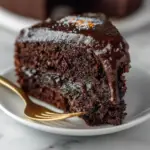
Perfectly Soft Moist Chocolate Cake
Description
Discover this easy moist chocolate cake recipe for a rich, soft, and irresistible dessert that everyone will love.
Ingredients
-
2 cups (250g) all-purpose flour
-
2 cups (400g) granulated sugar
-
¾ cup (75g) unsweetened cocoa powder
-
1½ teaspoons baking powder
-
1½ teaspoons baking soda
-
1 teaspoon salt
-
2 large eggs
-
1 cup (240ml) whole milk
-
½ cup (120ml) vegetable oil
-
2 teaspoons vanilla extract
-
1 cup (240ml) boiling water
Instructions
-
Preheat the oven to 350°F (175°C). Grease and flour two 9-inch round cake pans or line them with parchment paper.
-
Mix dry ingredients: In a large bowl, sift together the flour, sugar, cocoa powder, baking powder, baking soda, and salt. Stir until evenly combined.
-
Combine wet ingredients: In another bowl, whisk the eggs, milk, vegetable oil, and vanilla extract until smooth.
-
Combine wet and dry: Gradually add the wet ingredients into the dry ingredients. Stir until just combined — avoid overmixing to keep the cake light.
-
Add boiling water: Carefully pour the boiling water into the batter. Mix slowly until smooth. The batter will be thin, but this is normal.
-
Bake: Divide the batter evenly between the prepared pans. Bake for 30–35 minutes or until a toothpick inserted in the center comes out clean.
-
Cool: Allow the cakes to cool in their pans for 10 minutes. Then, remove from pans and cool completely on wire racks before frosting or serving.
Notes
For a richer flavor, consider using Dutch-processed cocoa powder, but adjust baking soda if needed.
Don’t skip the boiling water—it helps to unlock the cocoa flavor and creates the moist texture.
Use room temperature eggs and milk for better batter consistency.
Avoid opening the oven door frequently during baking to prevent sinking.
Advanced Techniques
1. Perfectly Blooming Cocoa Powder for Richer Flavor
To enhance the chocolate flavor of your moist chocolate cake, bloom your cocoa powder by mixing it with the boiling water before adding it to the batter. This process releases the cocoa’s natural oils and intensifies its richness. For a darker, more complex taste, use high-quality Dutch-processed cocoa, but note it’s less acidic and may require swapping baking soda for baking powder. Blooming cocoa powder is an advanced technique that guarantees a deep, luxurious chocolate taste that sets your cake apart from ordinary recipes.
2. Achieving the Ideal Cake Texture Using Oil Instead of Butter
While butter adds flavor, vegetable oil creates a moister crumb because it stays liquid at room temperature. Using oil in your moist chocolate cake ensures the cake remains soft and tender for days. For the best results, choose a neutral-flavored oil like canola or sunflower. Avoid olive oil or flavored oils unless you want to experiment with subtle taste shifts. Combining oil with eggs and milk provides a luscious texture that won’t dry out, even after refrigeration.
3. Incorporating Buttermilk for Extra Tenderness
Swapping whole milk with buttermilk in your cake batter adds a slight tanginess and tenderizes the crumb further. The acidity of buttermilk reacts with the baking soda, helping the cake rise better and stay moist. If you don’t have buttermilk on hand, you can create a substitute by mixing 1 tablespoon of vinegar or lemon juice with 1 cup of milk and letting it sit for 5 minutes. This technique elevates your cake’s softness and gives a subtle depth of flavor.
4. Using Cake Flour for a Lighter, Airier Crumb
If you prefer a cake that’s exceptionally light and fluffy, substitute all-purpose flour with cake flour. Cake flour has lower protein content, which reduces gluten formation, resulting in a delicate, tender crumb. When using cake flour, use slightly less than the amount of all-purpose flour or sift it well to maintain structure. This method is particularly useful if you’re aiming for an elegant dessert or layering the cake with light fillings.
5. Layering and Frosting Techniques for a Professional Finish
To present your moist chocolate cake beautifully, level the cake layers with a serrated knife or cake leveler before frosting. This creates an even surface for spreading frosting or ganache smoothly. For extra moistness, brush each layer lightly with simple syrup (equal parts sugar and water boiled and cooled) before frosting. This locks in moisture and adds sweetness. Use an offset spatula for clean edges and decorate with fresh berries or chocolate shavings for a stunning finish.
See more advanced recipes at cookingwhite.com
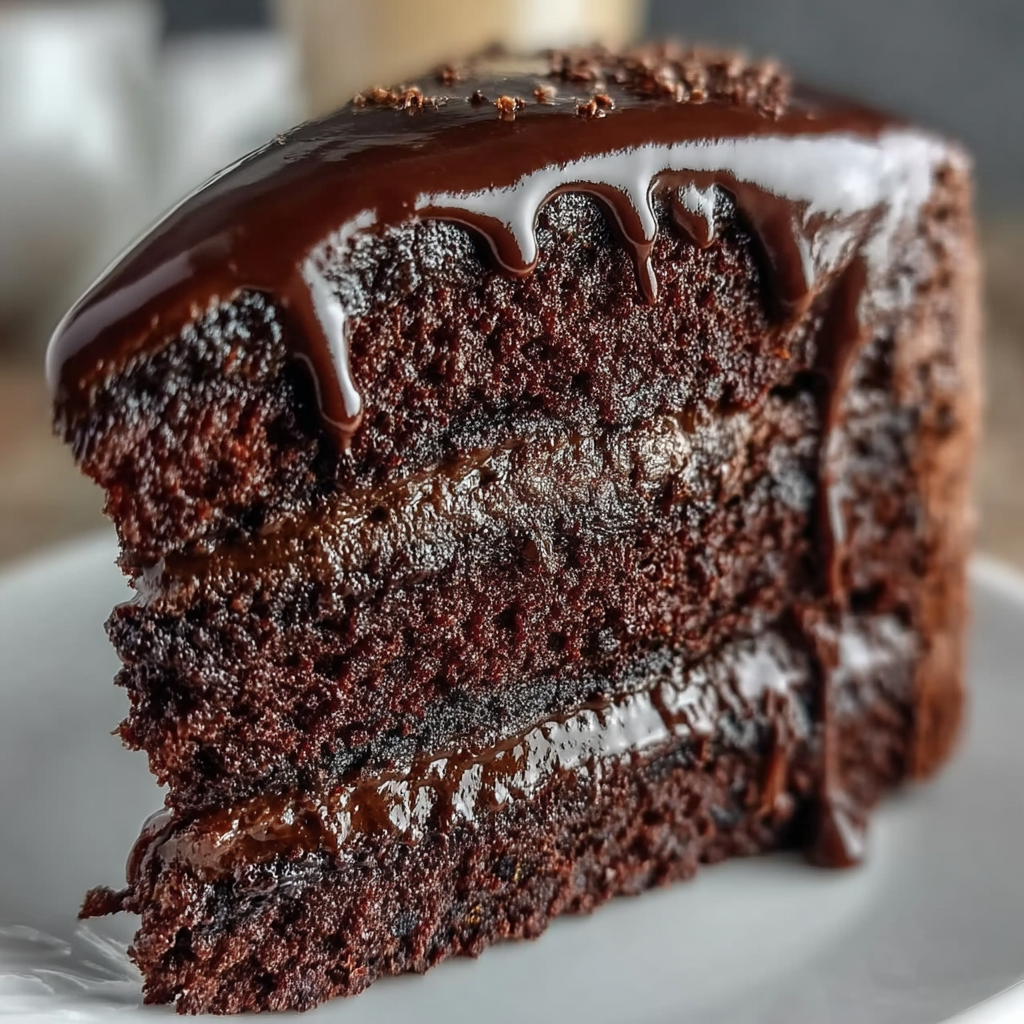
Storage, Shelf Life, and Maintenance Tips
1. Storing at Room Temperature for Optimal Freshness
A moist chocolate cake stored at room temperature remains soft and flavorful for 2-3 days when covered properly. Use a cake dome or airtight container to prevent the cake from drying out and to protect it from environmental moisture or odors. Avoid exposing the cake to direct sunlight or warm areas, which can cause the frosting to melt and spoil the texture.
2. Refrigerating the Cake to Extend Shelf Life
If you want to keep your cake fresh for up to a week, refrigeration is a good option. However, refrigeration can sometimes dry the cake out. To avoid this, wrap the cake tightly in plastic wrap or store it in an airtight container. Let the cake come to room temperature before serving to restore its moist texture and flavor.
3. Freezing for Long-Term Storage
For longer storage, moist chocolate cake freezes well for up to 3 months. Wrap the cake tightly in plastic wrap, then aluminum foil, or place it in a freezer-safe container. Thaw the cake overnight in the refrigerator, then bring it to room temperature before serving. Avoid freezing cakes with fresh cream-based frosting unless frozen without frosting and decorated after thawing.
4. Rejuvenating a Slightly Dry Cake
If your cake has become a bit dry, you can revive its moistness by gently brushing each layer with simple syrup before serving. Alternatively, warm individual slices briefly in the microwave with a damp paper towel nearby to introduce moisture. These quick fixes help restore softness and make the cake taste freshly baked.
5. Keeping Frosting Fresh and Stable
When storing frosted cakes, use a cake box or airtight container to prevent frosting from drying out or absorbing fridge odors. For buttercream frosting, chilling tightens the texture, so allow the cake to sit at room temperature before serving. For cream cheese or whipped cream frostings, refrigeration is necessary, but consume within 3 days for best taste and safety.
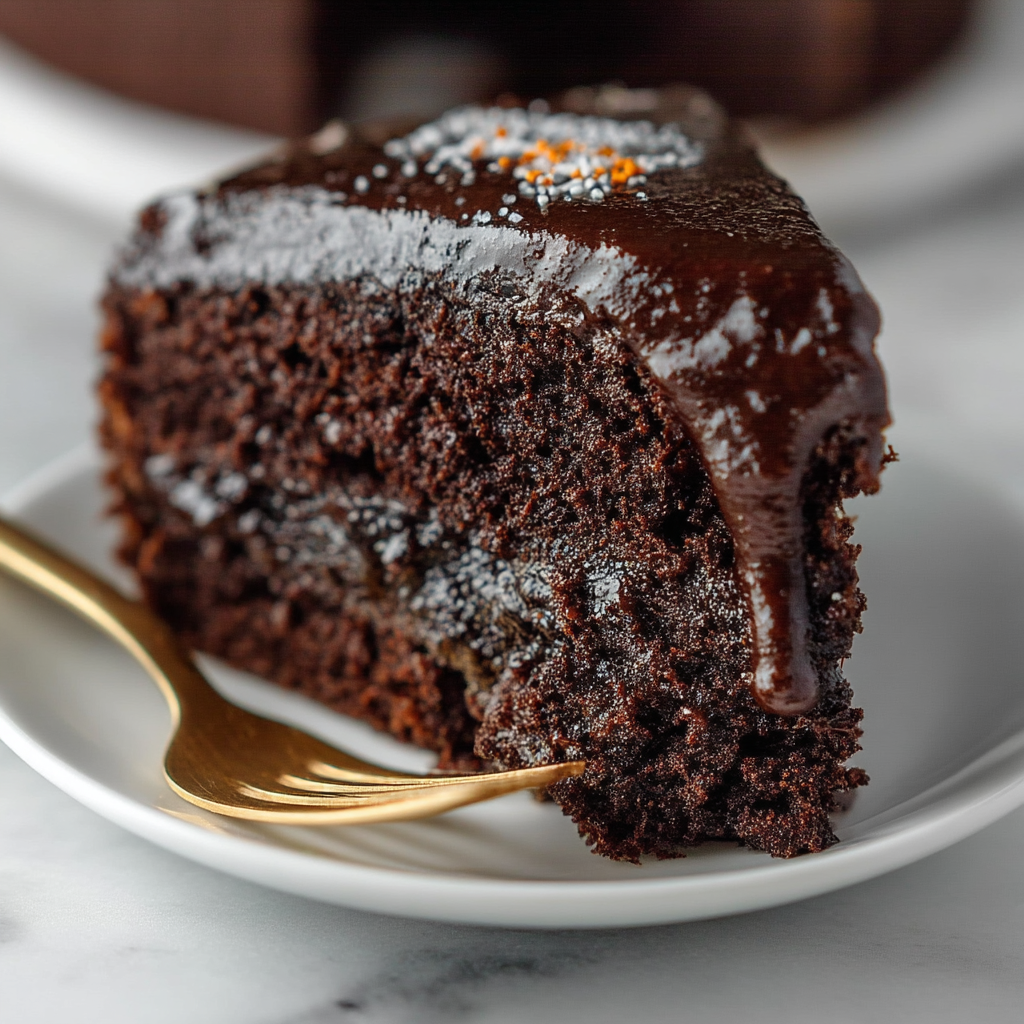
Dietary Adaptations and Substitutions
1. Vegan Moist Chocolate Cake Adaptation
Replace eggs with flax eggs (1 tablespoon ground flaxseed + 3 tablespoons water per egg) or commercial egg replacers. Substitute whole milk with almond, soy, or oat milk, and use vegetable oil or vegan butter. Ensure the cocoa powder and sugar are vegan-friendly (some sugars are processed with bone char). This adaptation maintains moistness and richness while being entirely plant-based and cruelty-free.
2. Gluten-Free Version
Swap the all-purpose flour with a gluten-free baking flour blend that contains xanthan gum for structure. Be sure to check that baking powder and cocoa powder are gluten-free certified. Gluten-free flours absorb liquids differently, so you may need to add an extra tablespoon of milk or oil for a similar moist texture. This version is perfect for those with celiac disease or gluten intolerance.
3. Low-Sugar Alternatives
Use natural sweeteners like erythritol, monk fruit sweetener, or stevia blends formulated for baking instead of granulated sugar. Adjust the amount according to sweetness equivalence. Note that sugar affects texture and moisture, so pairing low-sugar substitutes with an extra tablespoon of oil or milk can help maintain softness. This is ideal for those monitoring sugar intake or with diabetes.
4. Nut-Free Modifications
This recipe is naturally nut-free, but if you want to add texture, avoid using nut-based milks or toppings. Instead, consider seeds like sunflower or pumpkin seeds for crunch. Double-check all ingredient labels for cross-contamination if allergies are severe. Nut-free adaptations ensure safety without compromising the classic moist texture of the cake.
5. Dairy-Free Adjustments
Replace whole milk with any plant-based milk such as coconut, almond, or cashew milk. Use vegetable oil or a dairy-free butter substitute. Ensure the cocoa powder is dairy-free. This dairy-free version keeps the cake moist and flavorful while catering to lactose intolerance or dairy allergies.
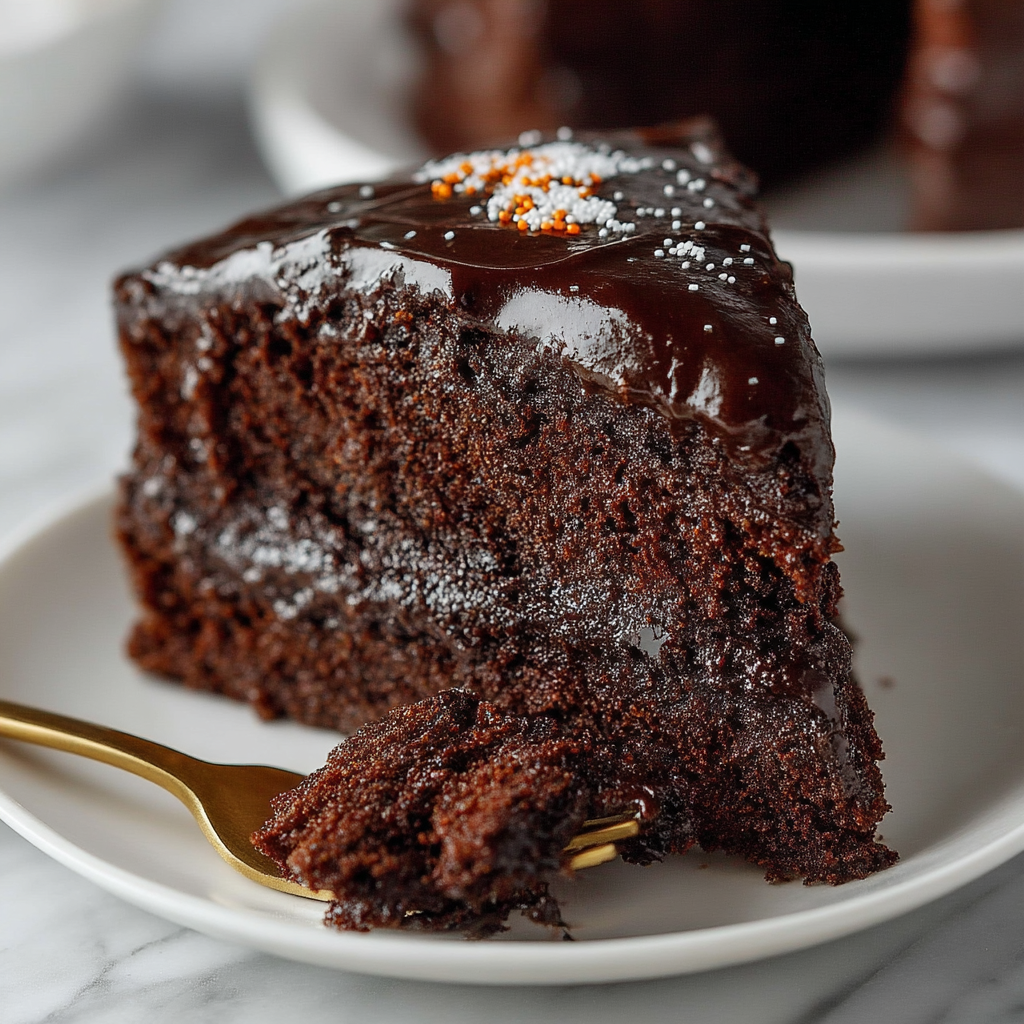
FAQs About the Recipe
1. Why Is My Chocolate Cake Dry Despite Using Oil?
Even though oil typically keeps cakes moist, overbaking or incorrect oven temperature can dry out the cake. Ensure your oven is calibrated correctly, and don’t open the oven door during baking. Also, check that your ingredients are fresh and measured accurately. Using boiling water as directed is crucial for moisture and texture.
2. Can I Use Cocoa Powder Instead of Melted Chocolate?
Yes! This recipe uses unsweetened cocoa powder rather than melted chocolate, which creates a lighter texture and allows easier mixing. Melted chocolate tends to make cakes denser. Use high-quality cocoa powder for the best flavor.
3. How Can I Make the Cake More Chocolatey?
Increase cocoa powder by 2-3 tablespoons or add a tablespoon of espresso powder to enhance chocolate depth without adding bitterness. You can also use a chocolate ganache or fudge frosting to boost the chocolate impact.
4. What’s the Best Way to Frost This Cake?
Buttercream, cream cheese frosting, or ganache all pair wonderfully with this moist chocolate cake. Make sure the cake layers are fully cooled before frosting to prevent melting. Level your layers for even frosting and consider brushing with simple syrup to keep layers moist.
5. How Do I Know When the Cake Is Fully Baked?
Insert a toothpick or cake tester into the center of the cake; it should come out clean or with a few moist crumbs, not wet batter. The cake will also start pulling away from the edges of the pan. Baking times may vary by oven, so keep a close eye near the end.
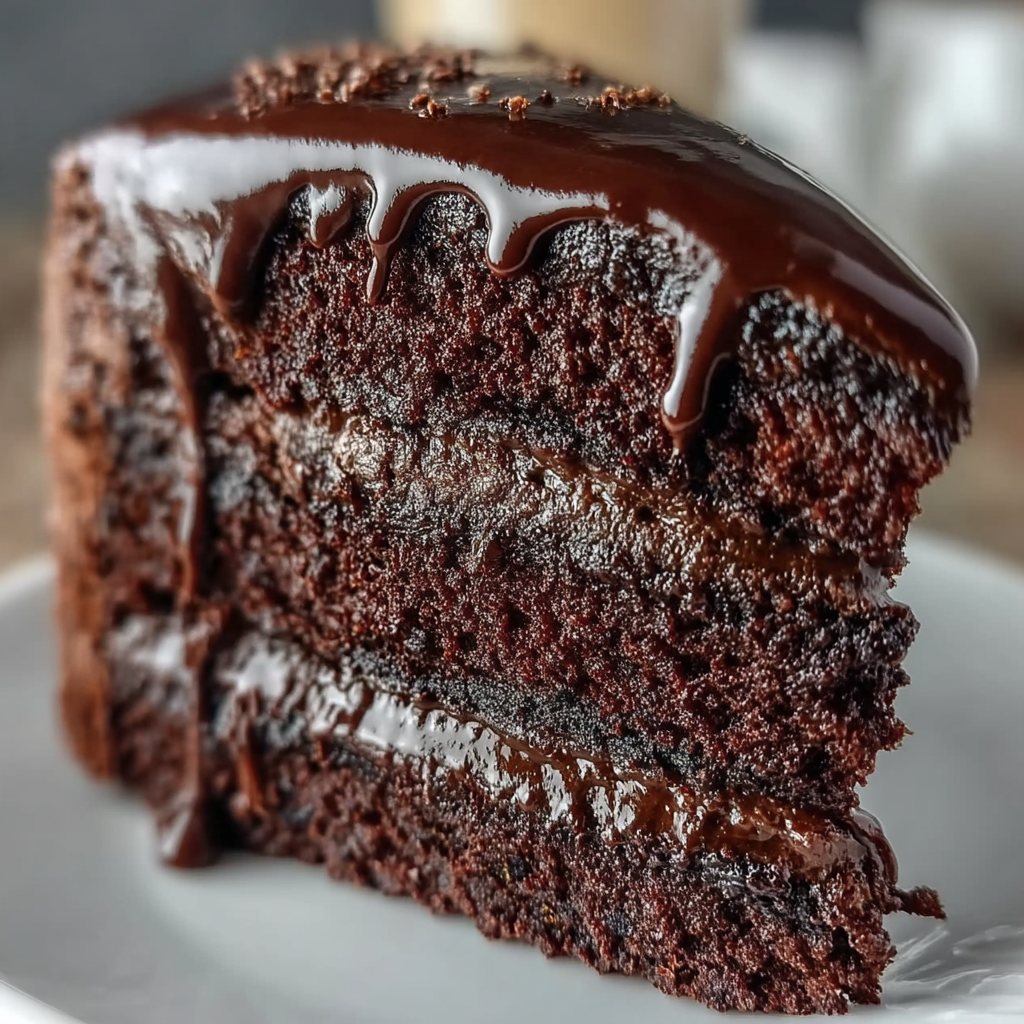
Conclusion & Final Thoughts
This moist chocolate cake recipe is a timeless classic that brings joy to every occasion with its rich flavor and tender crumb. The ease of preparation combined with the depth of chocolate taste makes it an ideal choice for both beginner and experienced bakers. Whether you’re baking for a family gathering, special celebration, or simply treating yourself, this cake offers a reliable way to impress and satisfy.
What truly makes this cake special is its versatility — adaptable for vegan, gluten-free, or low-sugar diets — and its ability to stay moist for days, a testament to the clever ingredient balance and baking techniques. The use of boiling water to bloom cocoa powder, vegetable oil for softness, and simple baking powders and soda creates a harmonious structure that yields a luscious and indulgent texture without fuss.
Pair it with your favorite frosting or serve it plain with a dusting of powdered sugar or fresh berries for an elegant dessert. This cake is also a fantastic base for creative enhancements like espresso infusions or layered fillings.
Ultimately, this moist chocolate cake recipe is about celebrating the beauty of simple, quality ingredients and classic baking wisdom. It’s a recipe that will become a beloved staple in your baking repertoire, perfect for everyday treats or unforgettable celebrations.
